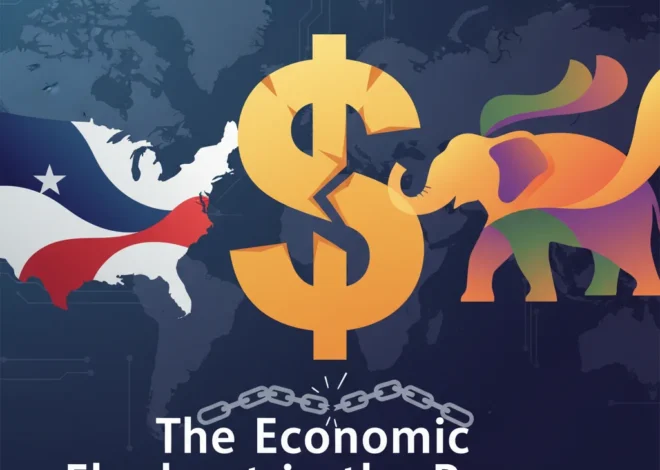
Beyond the Balance Sheet: Why Housing Stability is the Ultimate Economic Stimulus
In the polished corridors of power and the bustling floors of financial exchanges, conversations about the national budget often revolve around abstract figures: GDP growth, inflation rates, and fiscal deficits. These are the vital signs of a nation’s economic health. Yet, for millions, the economy isn’t an abstract concept; it’s the daily reality of making ends meet. Ahead of the Chancellor’s budget, a poignant perspective from those with the most at stake reminds us of a fundamental truth: a robust economy is built from the ground up, starting with a roof over every head.
Two men, speaking from the lived experience of homelessness, have voiced a simple yet profound plea: focus on housing. As one resident of a York shelter, Chris, stated, “Without a safe, secure place… nothing else can fall into place.” His sentiment, reported by the BBC, cuts through the complex jargon of economic policy to highlight a critical dependency. How can an individual participate in the workforce, manage their finances, or contribute to economic growth without the basic stability of a home? This is not merely a social issue; it is a core economic imperative that investors, business leaders, and finance professionals must understand.
The Hidden Economic Drag of Housing Instability
Homelessness and housing insecurity are often viewed through the lens of social welfare—a cost to be managed rather than a problem to be solved. This perspective is fundamentally flawed. In reality, failing to address the housing crisis acts as a significant drag on the national economy. The financial ramifications extend far beyond the direct costs of shelters and support services.
Consider the impact on the labor market. A person without a fixed address faces immense hurdles in finding and maintaining employment. The lack of a stable location for rest, hygiene, and security severely impacts productivity and reliability. The result is a segment of the potential workforce being locked out of the economy, leading to lower overall productivity, reduced tax revenues, and increased reliance on state benefits. According to a 2022 report by the charity Crisis, the overall cost of homelessness to the public purse in Great Britain is estimated to be between £3 billion and £5.1 billion per year (source), a staggering figure that represents a failure of investment, not an unavoidable expense.
Furthermore, the correlation between homelessness and poor health is well-documented. The constant stress, exposure to the elements, and lack of access to consistent healthcare lead to a higher incidence of both physical and mental health issues. This places an enormous burden on public health services, with the cost of emergency care for a homeless individual being significantly higher than for the general population. From an economic standpoint, this is a highly inefficient allocation of healthcare resources.
Beyond the Bezel: Why Dubai's Watch Market is a Ticking Indicator for the Global Economy
Re-framing Housing: From a Social Cost to a High-Yield Investment
For those in the world of finance and investing, the concept of Return on Investment (ROI) is paramount. What if we applied this same rigorous analysis to social housing? The evidence suggests that investing in stable, affordable housing is one of the highest-yield public investments a government can make. This isn’t about charity; it’s about smart economics.
A “Housing First” approach, which prioritizes providing permanent housing to individuals experiencing homelessness, has been shown to be incredibly effective. Research from Finland, a country that has virtually eradicated rough sleeping, demonstrates that it is more cost-effective to provide housing than to manage the downstream consequences of homelessness. When individuals are housed, their use of emergency services plummets, their health outcomes improve, and their ability to re-enter the workforce skyrockets.
Below is a simplified comparison illustrating the economic argument for proactive housing investment versus reactive crisis management.
| Metric | Reactive Model (Managing Homelessness) | Proactive Model (Investing in Housing) |
|---|---|---|
| Primary Cost Centers | Emergency shelters, A&E visits, police/justice system engagement, temporary accommodation. | Construction/acquisition of social housing, wraparound support services (e.g., mental health, job training). |
| Economic Impact | High, recurring public expenditure. Lost tax revenue. Depressed local economies. Reduced labor pool. | Initial capital outlay with long-term savings. Increased tax revenue from employment. Boost to construction sector. More stable communities. |
| Return on Investment (ROI) | Negative ROI; a perpetual drain on public finance. | Positive long-term ROI through reduced social spending and increased economic contribution. Studies suggest every £1 invested can save up to £2.80 in other public service costs (source). |
| Asset Creation | No tangible assets are created. | Creates a tangible, long-term national asset (housing stock). |
This data reframes the budget debate. A significant allocation to housing isn’t just spending; it’s a capital investment in national infrastructure—human infrastructure—that pays dividends for decades to come. For private investors, this shift is also creating new opportunities in social impact bonds and ESG (Environmental, Social, and Governance) funds that focus on developing affordable housing, blending financial returns with measurable social good.
The Role of Fintech and Modern Banking in Forging a Solution
The traditional banking and finance sectors have often struggled to serve the most vulnerable. Opening a bank account, securing a loan for a rental deposit, or building a credit history can be nearly impossible without a fixed address. This is where financial technology, or fintech, can be a game-changer.
Innovations in digital identity, for example, could allow individuals to maintain a verifiable identity without needing a permanent physical address, unlocking access to essential financial services. Fintech platforms specializing in micro-lending could provide small, accessible loans for rental deposits, breaking a major barrier to securing private-rented accommodation. Furthermore, specialized banking apps can offer budgeting tools and support tailored to those on low or insecure incomes, fostering financial literacy and resilience.
The rise of impact investing also presents a powerful avenue. Technology platforms now allow for fractional investment in social housing projects, democratizing the ability to contribute capital while earning a modest return. By leveraging technology, we can create more efficient, transparent, and accessible pathways for both public and private capital to flow into the housing sector, ensuring that funds are deployed effectively to where they are needed most.
Red Flags Over the Dragon: Why China's Military Shake-Up Demands Your Financial Attention
The Chancellor’s Crossroads: A Budget for Growth or a Budget for Stability?
The Chancellor stands at a crossroads. The pressure to deliver tax cuts, stimulate business investment, and control national debt is immense. In this high-stakes environment, a large-scale investment in housing might seem like a politically difficult choice. Yet, the argument that we must choose between fiscal prudence and social investment is a false dichotomy.
True fiscal responsibility involves making strategic investments that reduce long-term liabilities. As the data shows, failing to act on housing is a far more expensive path. A budget that prioritizes the construction of social and affordable housing is not a budget of expenditure; it is a budget for foundational growth. It is a budget that builds a more resilient workforce, reduces the strain on our public services, and creates a more stable, productive society.
The global economy is navigating a period of uncertainty. Geopolitical tensions, inflationary pressures, and technological disruption create a volatile environment for investors and businesses. In such times, the safest bets are on fundamentals. And there is no more fundamental component of a modern economy than a safely housed population.
Beyond the Glitter: Decoding Investment Signals in the Shifting Jewellery Market
As we analyze the Chancellor’s decisions, we must look beyond the immediate impact on the stock market or the headline GDP figures. We must ask a more profound question: does this budget strengthen the foundation upon which our entire economy rests? The voices from a York shelter provide the clearest answer. By focusing on housing, we are not just helping the most vulnerable; we are making a shrewd, long-term investment in the financial health and prosperity of the entire nation.


